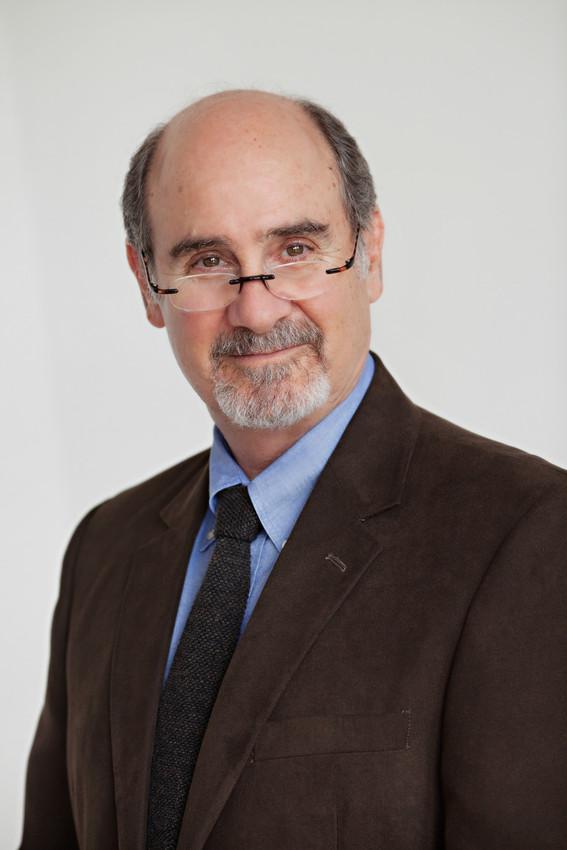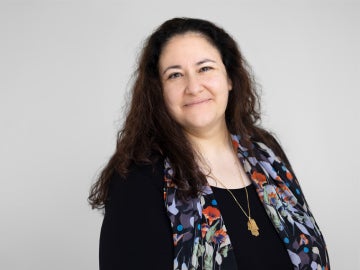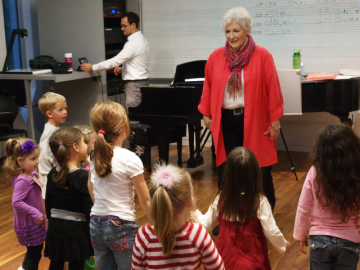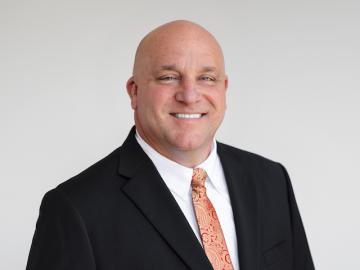Campus News
Course Joins Students and Alumni in the Classroom
March 9, 2016
Lisa Gulasy

Photo credit: Tanya Rosen-Jones ’97
From special events such as Commencement/Reunion Weekend to online forums such as Oberlin Switchboard, current students and alumni have many opportunities to engage with one another in casual settings. Rarely, however, are students and alumni able to share their experiences and opinions in the classroom.
The fall 2015 semester presented one such rare opportunity in the form of the course The Past and Future of Higher Education. Led by Steve Volk, professor of history and director of the Center for Teaching Innovation and Excellence, the primary goal of the course was to generate an informed intergenerational discussion about the history of U.S. higher education, its current state, and its possible future. Fifteen current students, seven alumni, three staff members, and one faculty member were enrolled in the weekly course. Those on campus convened in the Mudd Learning Center conference room, and the alumni were brought into the course by means of Zoom, a Skype-like software.
Volk, who was named U.S. Professor of the Year in 2011 and has taught at Oberlin for nearly 30 years, says he was interested in teaching this course in the fall semester for several reasons. First, though he has been engaged in issues of pedagogy via his role with the Center for Teaching Innovation and Excellence for the past eight years, he had never taught the subject of higher education. Second, the semester was Volk’s last on campus as a professor, and he wanted to try teaching in an entirely new way. And third, as course participant David Rehm ’83 says, the timing for a course that examined higher education was incredibly ideal.
“You couldn’t have picked a better time to do this course. Higher education is always in the news,” says Rehm, at that time Mount St. Mary’s University provost. “So many discussions we had were timely and relevant.”
Volk alerted alumni of the course offering with help from the Oberlin College Alumni Association. A webpage described the course, outlined expectations of alumni participants, and hosted a submission form. “I got about 40 applications for what were supposed to be five openings,” Volk says. He says he narrowed the applicant pool based on two requirements: “I wanted a demographic survey, and I wanted alumni participants to be involved in some aspect of higher education. So I ended up with at least one person who graduated in the 60s, 70s, 80s, 90s, and 00s, and among them was a high school counselor, a university provost, a dean of students, a university librarian. All were from different places and in different time zones.”
According to Volk, most of the 15-week course was spent examining the current state of higher education and the issues that affect it. These discussions were primarily led by two or three students with Volk interjecting as needed.
Elena Robakiewicz, a senior geology major with a minor in history enrolled in the course, helped lead a discussion on microaggressions. “It was a hard discussion to lead because the topic is controversial and because microaggressions are such a new concept. Even alums who graduated fewer than 10 years ago had no connections with what microaggressions are,” she says. “But it was a really cool class because we were able to show how the media portray microaggressions is not at all what college students believe they are.”
“Every week, the topic seemed to be on things that were happening on campus,” Volk says. “For example, we discussed diversity of faculty. We talked about the pipeline that prepares these faculty and what could happen to historically black colleges and universities if all universities are trying to hire more faculty of color. The students got a greater understanding of the difficulty of reaching demands, and the alumni were incredibly impressed with how passionate and thoughtful the students were when discussing these topics.”
Robakiewicz says having alumni and faculty and staff involved in these discussions had a significant impact on how students thought about these issues, and vice versa. “You have the students who know what’s going on campus and then you have people in the real world. Having that combination was really helpful because, unless you are a student, you really don’t know what’s happening on college campuses, and when you’re a student, it’s so easy to be consumed in what’s going on campus and not really see the bigger picture.”
“Student perspectives on social justice issues—race, gender, class, and others—oftentimes differed significantly from alumni perspectives, but I was continually impressed with how articulate and thoughtful students were in presenting their arguments,” says Michael Emerson Dirda ’09, head of executive communications at University of California, Berkeley. “I think they made several alumni reconsider their own viewpoints on things like safe spaces and trigger warnings.”
“One of the coolest thing about this course was that non-students were able to have conversations with us and realize, ‘Oh, they’re actually thinking. They’re not always complaining,’ which is really how our generation has been labeled at this point,” Robakiewicz says.
Volk says the course was ideal for attracting alumni because so many of those in the Oberlin community pursue careers in higher education. He additionally says so many alumni applied because returning to the classroom is many alum’s preferred way to engage with their alma mater. “What alumni know of their college was their experience in the classroom. And so when alumni are interested in engaging with their college, they could certainly listen to a streamed concert or watch Commencement. But to actually be inside a live class with students, that is what I think they want.”
Dirda, Rehm, and soon-to-be-alumna Robakiewicz all agree, as they say they would all be interested in taking a course that includes students, alumni, and faculty and staff again. “We shouldn't think of our conception of the classroom as immutable,” Dirda says. “Involving alumni in a course can be fulfilling for the alumni, professor, and students. Learning alongside Oberlin students from an Oberlin professor provides a meaningful and substantive way for alumni to connect with their alma mater.”
“There’s something almost sacred about the classroom,” Rehm says “The ability to speak one’s perspective in a civilized manner while being required to consider those with different perspectives, listen to what others have to say, and be informed by their views, those spaces aren’t easily found in the world. I think that’s special, and I think that would attract other alums to take classes like this.”
Volk says he is not aware of any faculty planning a similar course at this time, but he says any faculty member is capable of doing so. “Technology as a way to connect alumni to students and students to alumni, that is the future of higher education,” he says. “This is a model that can work for any faculty who teach on contemporary issues.” Volk encourages any faculty who are interested in leading a course like this to write to him at svolk@oberlin.edu.
You may also like…
Remembering Former Visiting Assistant Professor Leila Ben-Nasr
Leila Ben-Nasr, a former visiting assistant professor of comparative American studies, died on November 28, 2025.
Oberlin Community Remembers a Beloved Retired Professor
A member of Oberlin faculty for 13 years, Peggy Bennett was known by students and the Oberlin community for creating and leading MusicPlay, a preschool classroom and learning lab run as part of the...
Eric Rooks Named Director of Campus Safety at Oberlin
Longtime public servant emphasizes collaborative partnerships and kindness.


